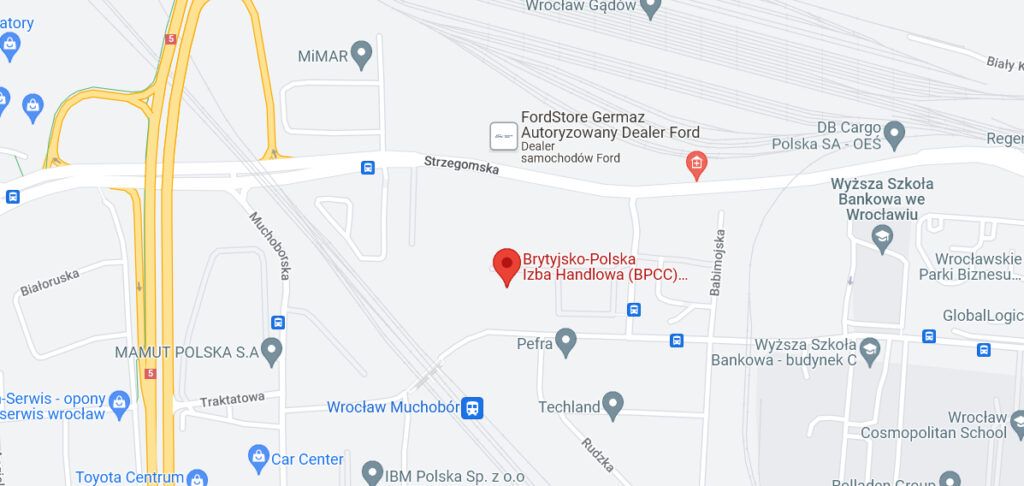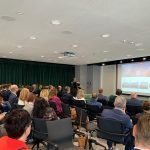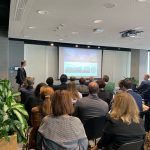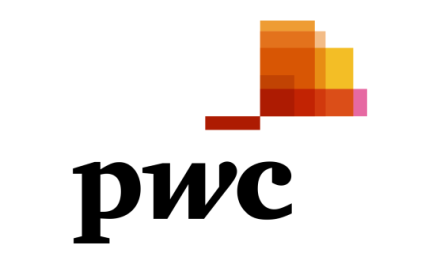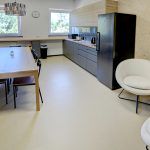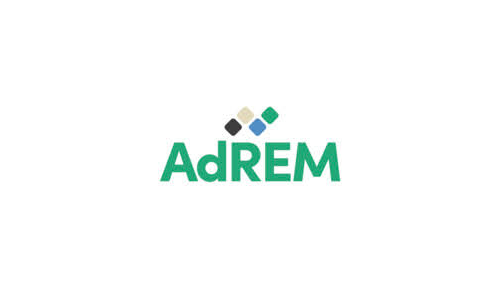Adaptive Re-Use of Real Estate Projects
CBRE Poland, 25.10.2023, Warsaw, Poland
by Robert Grzesiak, CBRE
– Adventum Group – Agnieszka Muż, Senior Asset Manager
As a fund manager, how much attention is Adventum Group paying to the adaptive re-use potential of the real estate it invests in?
Adventum Group aims to increase the value of its real estate by effective ‘management of the environment’. The most important aspect of adaptive re-use is the potential of a given investment opportunity that translates to increased value.
In Poland, due diligence prior to a real estate acquisition is thorough. Surroundings of the investment are also analysed, with regards to effects of a desired change and the potential development of the area. In situations where an investment opportunity is thoroughly debated and analysed, the potential upside of adaptive re-use projects is a possible ‘deal maker’.
Main analysis of adaptive re-use projects regards the potential for desired change in the localisation. The desired change is as individual as the adaptive re-use opportunity, and can range from increasing footfall to attaining sustainability certifications.
What conditions must an adapted or repurposed building meet to serve the needs of the market?
The Polish real estate market is maturing; investors and tenants perceive their real estate as an integral part of the company strategy, especially regarding decarbonisation. ‘Green’ and sustainable solutions are popular as they are both cost saving and in line with ESG targets. To be successful, adapted buildings are to meet the ESG certification criteria and help reach the firms decarbonisation goals.
The adapted building must be a good match for the employees. Employees are increasingly voicing their opinions, preferences and concerns regarding the building in which they operate. A strong change in perspective has occurred, where landlords work to keep key employees happy, rather than using corporate directives as the main strategy. Office employees communicate with their firms to create working space with the desired amenities that is best designed for employee needs.
– CBRE – Joanna Mroczek, Senior Director of Strategic Consultancy
How quickly might stranding events become a significant feature of the real-estate market in Poland?
The ‘Doom Loop’ and ‘stranding’ are not yet large issues in Poland. Polish municipalities are responsive, did not want singular-use districts, and avoid clusters that can lead to doom loops. The Służewiec district in Warsaw is a good example of urban space management, where office and industrial buildings are being adapted to residential use and the whole district is changing in character.
Remote locations are in increased risk of being stranded, especially with poor access to public transport. The change of a function of a building is a time-consuming process, and effective communication with the tenants is key in order to address current tenant needs, rather than obsolete ones.
What is the market potential of adaptive re-use, and which groups of stakeholders should be most interested in it right now?
The market for adaptive re-use is very broad, as it includes aging buildings of all purposes, as well as underperforming assets. Investors, landlords and real estate owners are the most interested, as they have the most potential upside from adaptive re-use opportunities. Investors are also engaged in the change as they get to redefine the ‘look and feel’ of a location. Tenants and end users are also invested, as they can voice needs.
Placemaking: is the discussion of the use and accessibility of the building. Regards action and collaboration of real estate owners in vicinity of the investment to work together in order to improve the accessibility and use of the area. Not ‘place-taking’ but ‘place-making’ proactive attitude in design. These efforts increase rent and compress the capitalisation rate as places become open and popular. Involves marketing and communication with potential users.
– Chapman Taylor – Rafał Giersz, Director
Is a new approach needed when investors start to plan a new project? Designing in adaptability from the outset?
The approach used is the big-picture analysis of the context. Without looking from the birds-eye view at the location and people that use it, it is difficult to manage change or control the effect that the change has on the environment. Demographic analysis helps reveal the users of the real estate, as well as the purpose of that use. Adaptive re-use projects aim to open previously-confined spaces, and increase the accessibility of the public to create a popular destination. Change management is made in an ‘as-wide-as-possible’ perspective.
Example of this is the Expo in Łódź, which is a project that aims to change 80 hectares of parks in the city, and will drastically alter the daily use of these public spaces. Another example is OSiR Marymont, which modernised 7.5 hectares of parkland with the goal of changing the way the district is used and perceived. The aim is to create a place of destination with many amenities in the recreational park, rather than just a sports complex with a car park. In short, high quality of life has become an investor KPI.
Can you mention any case studies in which an existing building has been adapted to a new use, and what were the initial conditions that allowed the adaptation to take place?
Kupiec Poznański (2001); retail park adaptation to a hotel with 156 rooms; the building was laser-scanned and the data used to model change. Visualisation of all the functions and spaces is key for change management in collaboration with the investor. Without finishing the square on which Poznański Kupiec sits, the investor did not want to engage in the adaptation.
Los Cubos; (1981); office building in Madrid in the style of Brutalism; the ageing construction necessitated the complete renovation of the façade, the accessibility, as well as the ground level use of the building. Ground Level and -1 have been adapted to change the geometry of the lobby so that entrance can be made directly from the street. The same function has been retained, with new technical and ecological solutions gaining a LEED Gold certification.
Technical and legal audit of an adaptive re-use opportunity are the building block of the change management process and of adaptive re-use planning.
– Globalworth – Bartosz Marcol, Sustainability & ESG Manager
As a commercial landlord, how conscious is Globalworth of the potential for adaptive re-use?
Globalworth is very conscious about potential for adaptive re-use. We created three avenues of re-use for internal development analysis purposes: Adaptive Re-use (change), Expansive Re-use (expansion), and Proactive Re-use (modernisation).
Relationships with tenants are changing; tenant goals are clearer, they are more informed, and, were applicable, want to clearly use the data from real estate market to implement it into their ESG strategy. ESG reporting engages both landlord and tenant, providing opportunity for aligned cooperation to fulfil commercial real estate potential.
Tenants vary in their consciousness of the sustainability and ESG that they want to engage in. Decarbonisation is a popular topic – tenants want to know how the process will look, and what effects does being in the building have on the carbon footprint, or what BMS systems are being used. Tracking programs and apps are popular solutions that aim to inform the tenant of the effects of his decision.
Globalworth received very positive responses to the changes made in the Warsaw Trade Center, which changed the social and shared areas in the building to be more open and inclusive for tenants and the general public.
– Osborne Clark – Agata Demuth, Partner
What are the legal obstacles facing real-estate owners when trying to change the use-category of an existing building?
There are two main aspects that affect the legal status of the building adaptation or retrofitting concern the local zoning and development plan, or its absence:
- If the local zoning and development plan is present, the investor can try to change the use-category in the development plan by submitting a request to the local authorities with proposed changes to receive a planning permit. Following the decision, the local authorities have to enact the zoning plan on the affected land, which can take time.
- If the building is located on an area with defined local development conditions, a request can be submitted to the authorities, filing for amendments of existing conditions. These conditions are easier to change than the local plan, but investors must be prepared for the collaboration with authorities to review and accept the proposal.
- A new reform is coming start of next year that will bring changes. After the reform, General Development Plans are coming within three years, where every local authority is required to create a plan that will define the potential for development.
What changes are needed to existing building regulations if adaptive re-use is to become a practical answer to the looming problem of stranding events?
Legal framework makes a clear definition between a developed plot, and an undeveloped plot. Undeveloped plots have more potential for change and growth, and are much less of a headache for owners than developed plots. Regulations that apply to adaptive re-use projects should treat existing buildings, especially the aging ones, differently than other existing structures. There are so many aging buildings in Poland that the loosening of regulations could help bring them back to life.
The standardisation of urban development laws in Poland is necessary as these changing regulations are a headache for investors. Various government entities have the possibility to interfere in the use-category change process, making the process time and resource consuming while without guarantees.
– Santander Bank – Renata Grzonkowska, Real Estate Financing
From the financier’s point of view, how can you help real-estate owners assess the financial viability of borrowing money to adapt an existing property to a different use?
From the financing perspective, a building with plan for modernisation or refitting is analysed with regards to the cash-flow generation and valuation of the project, which decide the value of the financing commitment.
In cases where the bank is already financing adaptive re-use or retrofitting, the regulatory bodies are requiring more due diligence and stricter review of their projects, and may require active project management.
Banks look at US and UK green certifications, but these are not always enough, as their taxonomy does not translate perfectly to the EU market. Banks require support or proactive communication from investors, as they do not manage the investors’ risk, but try to minimize it by analysing necessary data.
Adaptive Re-Use can have no effect on the cash flow generation, in which case the financiers does not have arguments for financing. It is key for real estate owners to show the prospective financial benefits of adaptive re-use projects. For banks to engage, the investor must be experienced and communicative with the bank, as well as the local government.
Are stranding events something that worry banks as they look over their property loan portfolios?
Stranding events worry banks, as these have the potential to render investments obsolete and unprofitable. To remedy this, banks look for proactive investors with quality due diligence that provide creative solutions and follow regulatory directives. These define the framework in which the investment will be analysed for financing. Stranding events are eliminated through the due diligence process, where problems are identified before they spiral out of control. In the event stranded events are identified, investments are made in order to remedy the effects of the stranding.
What advice do you offer your customers?
Placemaking is very important from the point of view of the bank, which appreciates the effort of the investor making the investment inclusive to other tenants, as well as landlords and the public. ‘Warming’ of the atmosphere is very appreciated, while might not directly have effects on the financing.
Rules and regulations should be more focused, as indecision or unknown aspects put off banks’ financing efforts.
Notes from the Presentation and Q&A session:
Research regarding the benefits of adaptive re-use of building has yielded the following results in a pan-European study:
– +6% – 8% increase in rent in certified buildings
– +8% – 15% increase in real estate value after placemaking
– +14% – 16% increase in the capital value in sustainable real estate
– Other benefits include realisation of ESG targets and lowering of operational costs
Revitalisation must occur in the same way as they do in the UK, in a holistic manner. Stakeholders’ involvement in the process as per the new real estate policy is encouraged.
Sellers/vendors of real estate do not want to provide investment opportunity financial modelling for revitalisation, refitting or adaptive re-use of buildings during the sale. However, attaining the necessary documents for a potential change of the building has the potential to increase the value of the real estate.
Risk involves time: realisation of the investment is turning the potential into reality. Therefore the time scale of the investment is the defining factor for the adaptation plans. Solutions often require creativity combined with a controlled understanding of the market. Purpose analysis must be done, as every five to seven years the idea of the purpose of the building may be outdated.


